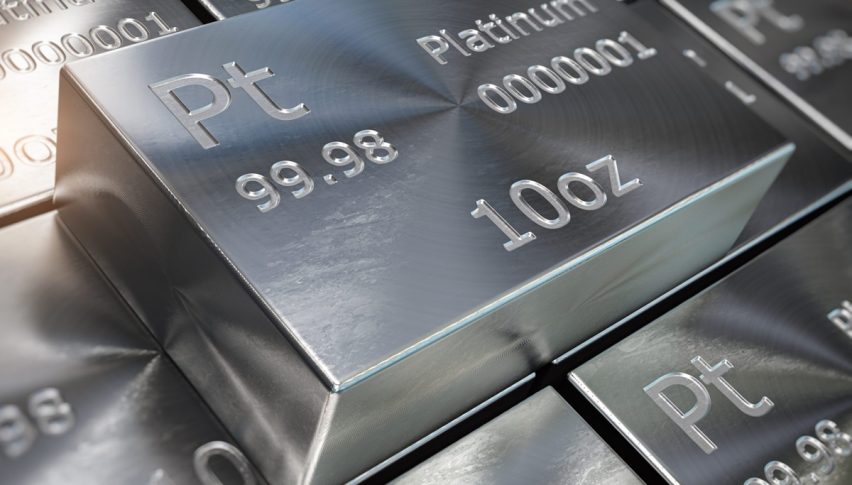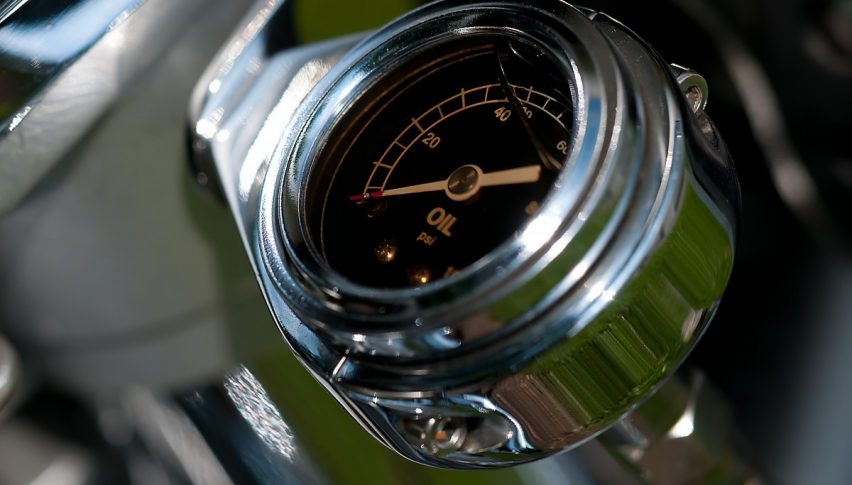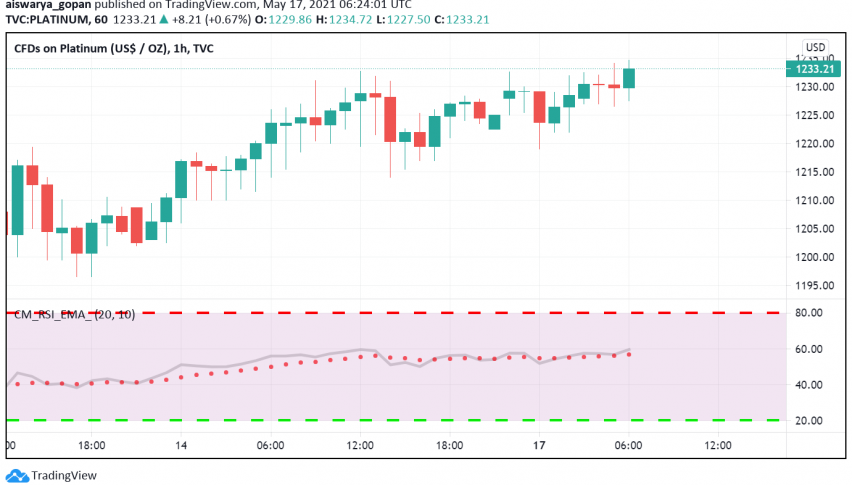Prices Forecast: Technical Analysis
For the daily forecast, Platinum is expected to close around $1,430, with a potential range between $1,420 and $1,440. The weekly forecast suggests a closing price near $1,435, with a range from $1,425 to $1,445. The RSI at 72.81 indicates a bullish momentum, suggesting that the price might continue to rise. The ATR of 41.29 points to moderate volatility, which could lead to price fluctuations within the predicted range. The MACD line is significantly above the signal line, reinforcing the bullish sentiment. However, the ADX at 36.22 suggests that while the trend is strong, it may not be accelerating. The Bollinger Bands show a widening range, indicating increased volatility, which supports the potential for price swings within the forecasted range.
Fundamental Overview and Analysis
Platinum has recently shown a strong upward trend, driven by increased demand and limited supply. The asset’s value is influenced by industrial demand, particularly from the automotive sector, and geopolitical factors affecting mining regions. Investor sentiment remains positive, as indicated by the bullish technical indicators. However, risks such as market volatility and potential regulatory changes could impact future performance. The current valuation appears fair, given the strong demand and supply constraints. Opportunities for growth include expanding industrial applications and potential technological advancements. Nonetheless, competition from alternative materials and economic downturns pose challenges. Overall, Platinum is positioned for growth, but investors should remain cautious of external risks.
Outlook for Platinum
The future outlook for Platinum remains positive, with expectations of continued demand growth and supply constraints. Historical price movements show a strong upward trend, supported by bullish technical indicators. Economic conditions, particularly in major consuming countries, will play a crucial role in influencing prices. In the short term (1 to 6 months), prices are expected to remain within the $1,420 to $1,440 range, with potential for upward movement if demand increases. Long-term forecasts (1 to 5 years) suggest continued growth, driven by industrial demand and potential supply disruptions. External factors such as geopolitical tensions and technological advancements could significantly impact prices. Investors should monitor these developments closely to make informed decisions.
Technical Analysis
Current Price Overview: The current price of Platinum is $1,428.6, slightly below the previous close of $1,430. Over the last 24 hours, the price has shown a slight downward trend with moderate volatility. Support and Resistance Levels: Key support levels are at $1,427.57, $1,426.53, and $1,420.67. Resistance levels are at $1,434.47, $1,440.33, and $1,441.37. The pivot point is at $1,433.43, and the asset is trading slightly below it, indicating potential bearish pressure. Technical Indicators Analysis: The RSI at 72.81 suggests a bullish trend. The ATR of 41.29 indicates moderate volatility. The ADX at 36.22 shows a strong trend, but not accelerating. The 50-day SMA is above the 200-day EMA, indicating a bullish crossover. Market Sentiment & Outlook: Sentiment is currently bullish, supported by the RSI and moving average crossover. However, trading below the pivot suggests caution. Moderate volatility as indicated by the ATR suggests potential price swings.
Forecasting Returns: $1,000 Across Market Conditions
The table below outlines potential returns on a $1,000 investment in Platinum under different market scenarios. In a Bullish Breakout scenario, a 10% price increase could raise the investment to approximately $1,100. In a Sideways Range scenario, a 2% price change might adjust the investment to around $1,020. In a Bearish Dip scenario, a 5% decrease could reduce the investment to about $950. These scenarios highlight the importance of understanding market conditions and adjusting investment strategies accordingly. Investors should consider their risk tolerance and market outlook when deciding to invest in Platinum. Diversification and regular market analysis can help mitigate risks and optimize returns.
| Scenario | Price Change | Value After 1 Month |
|---|---|---|
| Bullish Breakout | +10% to ~$1,572 | ~$1,100 |
| Sideways Range | +2% to ~$1,457 | ~$1,020 |
| Bearish Dip | -5% to ~$1,357 | ~$950 |
FAQs
What are the predicted price forecasts for the asset?
The daily forecast for Platinum suggests a closing price around $1,430, with a range between $1,420 and $1,440. The weekly forecast indicates a closing price near $1,435, with a range from $1,425 to $1,445.
What are the key support and resistance levels for the asset?
Key support levels for Platinum are at $1,427.57, $1,426.53, and $1,420.67. Resistance levels are at $1,434.47, $1,440.33, and $1,441.37. The pivot point is at $1,433.43, with the asset trading slightly below it.
What are the main factors influencing the asset’s price?
Platinum’s price is influenced by industrial demand, particularly from the automotive sector, and geopolitical factors affecting mining regions. Investor sentiment and technical indicators also play a significant role in price movements.
What is the outlook for the asset in the next 1 to 6 months?
In the short term, Platinum’s price is expected to remain within the $1,420 to $1,440 range, with potential for upward movement if demand increases. Economic conditions and geopolitical factors will be crucial in influencing prices.
Disclaimer
In conclusion, while the analysis provides a structured outlook on the asset’s potential price movements, it is essential to remember that financial markets are inherently unpredictable. Conducting thorough research and staying informed about market trends and economic indicators is crucial for making informed investment decisions.



